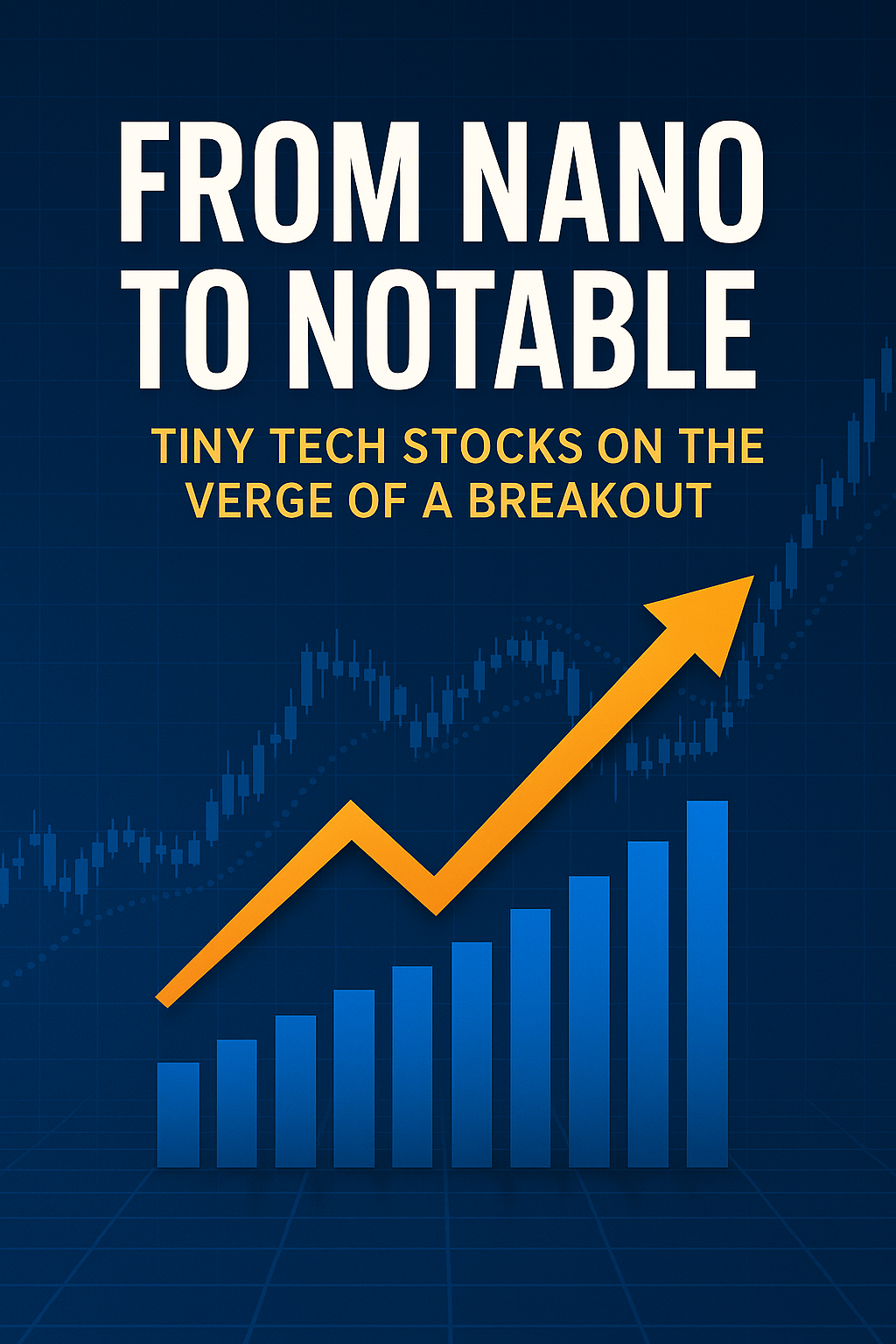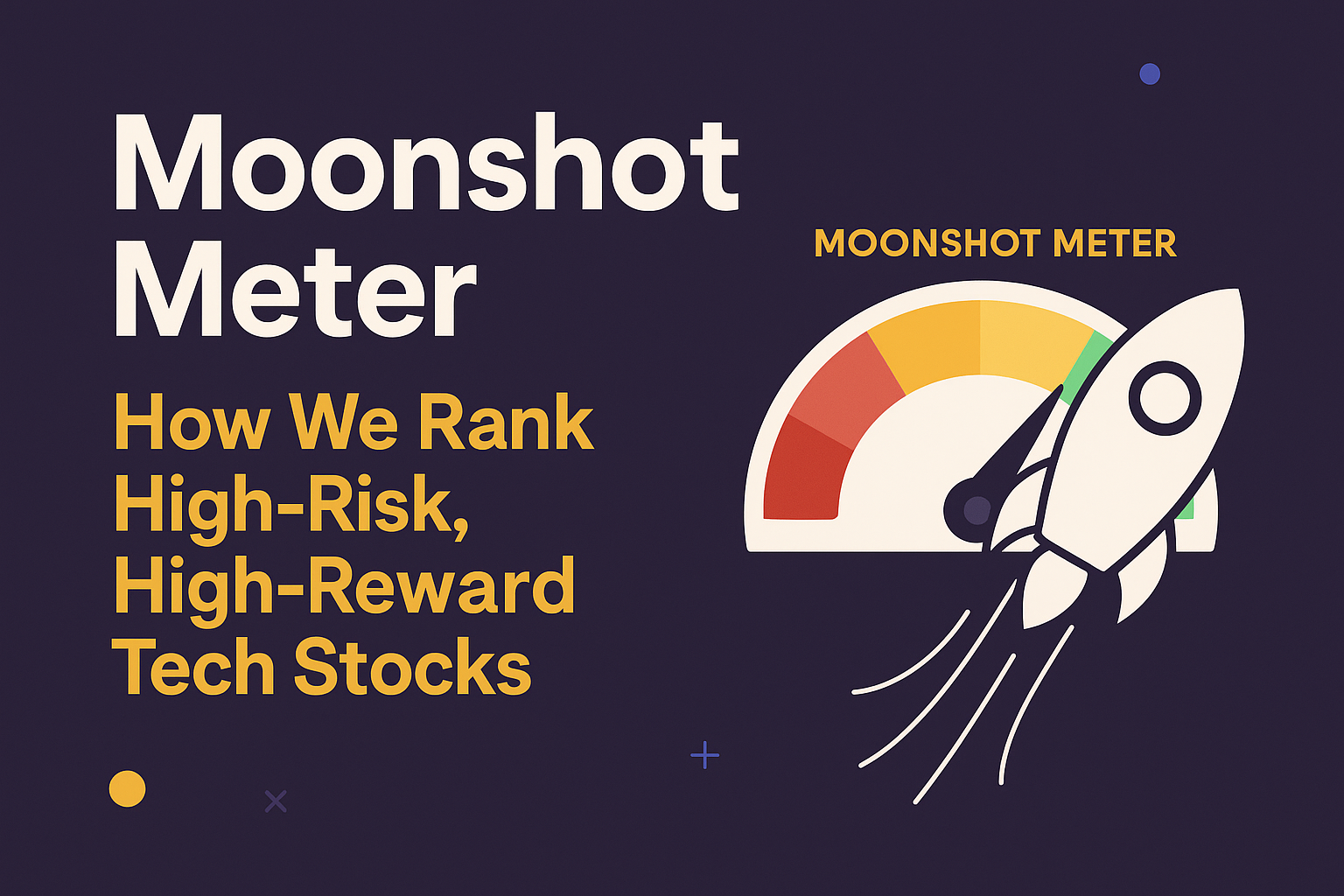
The next NVIDIA or AMD might be hiding in plain sight—trading under $5, virtually unknown, and building the building blocks of future tech. While mega-cap names dominate headlines, some of the highest-potential opportunities lie in tiny, under-the-radar companies developing breakthrough technologies.
These nano-cap and micro-cap stocks—often with market caps under $300 million—are pushing the boundaries of photonics, semiconductors, AR/VR infrastructure, and nanomaterials. High risk? Absolutely. But also high reward for those willing to dig deeper and think long-term.
If you’re hunting for the next big winner before the crowd catches on, start here.
What Is a “Nano-Cap” Tech Stock?
Nano-cap and micro-cap stocks are companies typically valued under $300 million, sometimes under $100 million. These stocks often:
- Trade under $5 (or even $1)
- Operate in niche, emerging tech markets
- Carry high volatility and limited liquidity
- Have unique IP or partnerships but are pre-profit or early-revenue
Despite the risks, many tech giants were once tiny bets—Apple, AMD, and Netflix all traded under $5 at some point. The key is spotting the next breakout before institutional money piles in.
Why Tiny Tech Stocks Could Surge in 2025–2030
A perfect storm is forming for nano-cap innovation:
- 🧪 University spinouts and patent-rich startups are reaching public markets faster
- 🏛️ Government funding (DARPA, ARPA-E, DOE) is flowing into deep tech
- ⚙️ New platforms (AI, AR/VR, clean tech) need new hardware and infrastructure
- 📉 Underweight exposure by institutions gives retail investors early access
As tech cycles turn and legacy giants slow down, nimble innovators with breakthrough IP are gaining ground.
🚀 7 Tiny Tech Stocks With Huge Breakout Potential
⚙️ 1. Aeluma Inc. (ALMU)
Market Cap: ~$350M | Focus: Compound semiconductors & photonic sensors
Aeluma is developing next-gen compound semiconductors on silicon wafers—a critical material for advanced sensors used in LiDAR, AR/VR, and defense.
📌 Why it matters: Their tech enables high-speed data transfer and sensing at low cost, which could be vital for AI vision, smart infrastructure, and beyond.
2. POET Technologies (POET)
Market Cap: ~$75M | Focus: Photonic integrated circuits (PICs)
POET is quietly building the plumbing of tomorrow’s data centers—energy-efficient photonic chips that move data at the speed of light, not electricity.
📌 Why it matters: As AI workloads surge, traditional copper interconnects hit their limits. POET’s optical engine platform could be a game-changer in edge computing and cloud infrastructure.
3. NexTech3D.ai (NTAR)
Market Cap: ~$25M | Focus: 3D modeling for ecommerce and AR
This company uses AI to convert product photos into high-quality 3D assets at scale—used by Amazon, Shopify, and other retail platforms.
📌 Why it matters: As the web shifts toward spatial experiences (think Apple Vision Pro, metaverse commerce), 3D product visualization will become a baseline requirement.
⚡ 4. Meta Materials Inc. (MMAT)
Market Cap: ~$40M | Focus: Nanomaterials for defense, automotive, and telecom
MMAT is working on futuristic materials with properties like invisibility to radar or ultra-thin shielding. Their IP portfolio spans transparent antennas, smart surfaces, and battery coatings.
📌 Why it matters: Their tech has dual-use appeal, from fighter jets to 6G wireless, and partnerships with NASA and Lockheed Martin give them a legitimate shot at commercialization.
🔍 5. LightPath Technologies (LPTH)
Market Cap: ~$45M | Focus: Infrared optics and sensors
LightPath makes high-performance optical lenses used in thermal imaging, industrial robotics, and autonomous vehicles.
📌 Why it matters: Their IP in chalcogenide glass and infrared optics makes them a stealth pick in both AI vision and defense sensing tech.
6. Spectra7 Microsystems (SPVNF)
Market Cap: ~$15M | Focus: High-speed signal integrity chips for data and XR
Spectra7 builds analog chips that enhance speed and reduce heat in high-bandwidth applications like AI servers, VR headsets, and automotive data systems.
📌 Why it matters: As XR and AI grow more data-intensive, the need for signal optimization in tight, power-constrained devices will surge.
⚛️ 7. Atomera Inc. (ATOM)
Market Cap: ~$90M | Focus: Semiconductor performance enhancement
Atomera’s patented MST (Mears Silicon Technology) is a thin film applied to existing semiconductor wafers to boost power efficiency and speed.
📌 Why it matters: Rather than building chips, Atomera licenses tech to fabs—offering a scalable, high-margin model if adoption ramps.
Where Tiny Tech Is Booming
These companies span several sectors likely to explode in the next decade:
- Photonics & optics: Fueling AI, edge computing, LiDAR
- AR/VR infrastructure: Hardware to support spatial computing
- Semiconductor materials: Atomic-level breakthroughs
- Defense & dual-use tech: Growing geopolitical demand
- AI-supporting components: High-speed, low-power chips
- Advanced manufacturing: Nanomaterials and 3D design
⚠️ What to Watch Before Investing
These moonshot stocks come with real risks:
- 💸 Pre-revenue or minimal revenue
- 📉 Low liquidity and high volatility
- 🧾 Dependence on government funding or pilots
- 🔍 Execution risk in scaling hardware
- 🧪 Tech that’s still unproven in real-world applications
Always do deep due diligence. Check their patents, partnerships, and SEC filings—and watch for signs of dilution or reverse splits.
Final Word: Think Big, Start Small
If you want 10x gains, you won’t find them in the S&P 500. You’ll find them where innovation is raw, the story is still unfolding, and most investors aren’t looking.
These tiny tech stocks won’t all be winners—but the right one could be your portfolio’s crown jewel by 2030.
📌 Bookmark these names. Review them quarterly. One might just go from nano to notable before the crowd catches on.





Be the first to comment